Text

In Louisiana, black women were put in cells with male prisoners and some became pregnant.
All children born in the penitentiary to blacks were property of the state.
At 10 years, they would be auctioned off. The proceeds were used to fund schools for white children.
Before the Civil War, most prisoners in the South were white. The punishment of enslaved African Americans was generally left up to their owners. Louisiana, however, did imprison enslaved people for "serious" crimes, generally involving acts of rebellion against the slave system.
A number of these imprisoned slaves were women. Penitentiary records show a number of women imprisoned for "assaulting a white," arson, or attempting to poison someone, most likely their enslavers.
Some of these female prisoners became pregnant, either by fellow inmates or prison officials. In 1848, state legislatures passed a law declaring that all children born in the penitentiary to African Americans serving life sentences would become property of the state.
The women would raise the children inside the prison until the age of 10, at which point they would be auctioned on the courthouse steps.
Many of the buyers were prison officials, including heads of the company that ran the penitentiary. The proceeds were used to fund schools for white children.
www.ko-fi.com/africanarchives
683 notes
·
View notes
Text

Caged Fangs~ Part of my Cage Dress series. I've been so busy with other things, it's nice to finish a proper painting again. Here's a quick timelapse of how I painted it. The full hours long videos, HD image and PSD files will be DMed on my Patreon on June 5th.
21K notes
·
View notes
Photo

Trish Goff @ Christian Dior Haute Couture Fall/Wint 1997
750 notes
·
View notes
Text

2K notes
·
View notes
Photo





League of Legends cinematic backgrounds by Daniel Clarke
10K notes
·
View notes
Photo

The Piazzetta, Venice Edward Pritchett (British, 1828–c.1879)
156 notes
·
View notes
Photo





The Window to the Soul by Priya Kakati
12K notes
·
View notes
Text



















La maison Ruth et Russell Kraus. Située à Kirkwood, dans le Missouri, conçue par Frank Lloyd Wright. Photos Andrew Pielage - Saint Louis Today.�� - source MCM Daily.
113 notes
·
View notes
Photo

1860s Konstantin Makovsky (1839-1915), Portrait of Maria Feodorovna (Dagmar of Denmark) (1847-1928).
71 notes
·
View notes
Text




#architecture#metropolitan area#outer underground#illustration#digital art#traditional art#aesthetic
10K notes
·
View notes
Text
Christopher Tolkien editing History Of Middle Earth, The Silmarillion, JRR Tolkien's Letters, organising his father's notes, and trying to make sense of the random elvish scribbles and doodles on each page:

#he's really my hero guys#rings of power#lord of the rings rings of power#amazon rings of power#the silmarillion#jrr tolkien
945 notes
·
View notes
Text

Cecil J Williams
Ever Defiant✊🏼✊🏽✊🏾✊🏿
15K notes
·
View notes
Text
People often say LOTR is a story about hope. (I'm reminded of it because someone said it in the notes of my Faramir post.) And that's true, but it's not the whole picture: LOTR is in large part a story about having to go on in the absence of hope.
Frodo has lost hope, as well as the ability to access any positive emotion, by Return. He is already losing it in Towers: he keeps going through duty and determination and of course Sam's constant help.
For most of the story, Sam is fueled by hope, which is why it's such a huge moment when he finally lets go of the hope of surviving and returning home, and focuses on making it to the Mountain. To speed their way and lighten the load, he throws his beloved pots and pans into a pit, accepting that he will never cook, or eat, again.
When Eowyn kills the Witch King, she's beyond hope and seeking for a glorious death in battle. It's possible that in addition to her love and loyalty for Théoden, she's strengthened by her hopelessness, the fear of the Nazgúl cannot touch someone who's already past despair.
Faramir is his father's son, he doesn't have any more hope of Gondor's victory or survival than Denethor does, he says as much to Frodo. What hope have we? It is long since we had any hope. ... We are a failing people, a springless autumn. He knows he's fighting a losing war and it's killing him. When he rejects the ring, he doesn't do it in the hope that his people can survive without it, he has good reason to believe they cannot. He acts correctly in the absence of hope.
Of course LOTR has a (mostly) happy ending, all the unlikely hopes come true, the characters who have lost hope gain what they didn't even hope for, and everyone is rewarded for their bravery and goodness, so on some level the message is that hope was justified. But the book never chastises characters who lost hope, it was completely reasonable of them to do so. Despair pushed Théoden and Denethor into inaction, pushed Saruman into collaboration, but the characters who despaired and held up under the weight of despair are Tolkien's real heroes.
(In an early draft of Return, Frodo and Sam receive honorary titles in Noldorin: Endurance beyond Hope and Hope Unquenchable, respectively. Then he cut it, probably because it was stating the themes of the entire book way too obviously, because this is what Tolkien cared about, really: enduring beyond hope. Without hope.)
Also, people who know more than me about the concept of estel, feel free to @ me.
11K notes
·
View notes
Photo

Giuseppe Giorgetti’s Saint Sebastian which is placed at the site of the saint’s burial along the Appian Way.
50K notes
·
View notes
Text
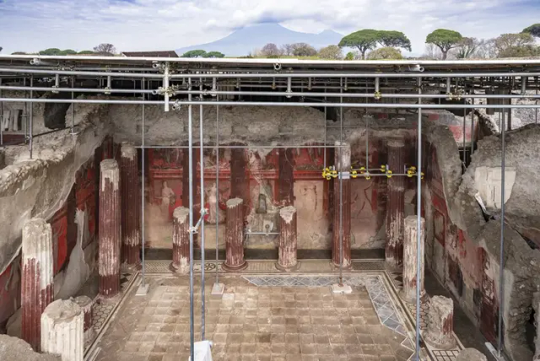
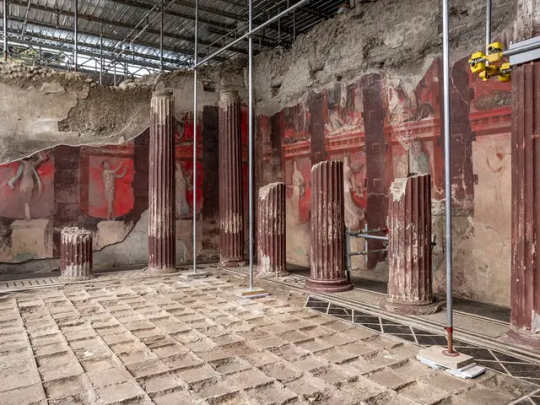
Stunning Frescoes of a Mysterious Dionysian Cult Discovered in Ancient Pompeii
Created more than a century before the eruption of Mount Vesuvius in 79 C.E., the wall paintings provide rare insights into secret rituals conducted in the Roman city.
Archaeologists in Pompeii have uncovered a series of nearly life-size frescoes spanning three walls of an ancient banquet hall. Set against a ruby-red backdrop, the wall paintings depict female followers of Dionysus—the Greek god of wine and ecstasy—engaged in secretive cult rituals.

Also known as maenads or bacchantes, the women have swords in their hands and slaughtered animals draped across their bare shoulders. Alongside flute-piping satyrs, they’re engaged in a wild, ritualistic dance, while shellfish, eels, squid and poultry dangle above them. In the center of it all, a clothed woman awaits her initiation into the cult.
Pompeii is full of colorful frescoes, but this one is particularly rare. The only other large wall painting depicting a Dionysian ceremony was unearthed in the so-called Villa of the Mysteries in the ancient city’s suburbs in 1909, according to a statement from the Pompeii Archaeological Park.
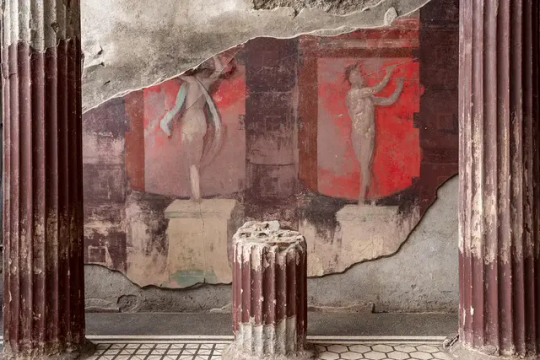
Known as a megalography—a Greek term for a large-scale painting—the banquet hall fresco was uncovered at the newly excavated House of Thiasus. It dates to the first century B.C.E., more than 100 years before Mount Vesuvius erupted in 79 C.E. and cast pumice and ash down upon Pompeii.
“In 100 years’ time, today will be remembered as historic,” Alessandro Giuli, the Italian culture minister, told reporters at the unveiling of the wall paintings on Wednesday, per Reuters’ Crispian Balmer. “Alongside the Villa of the Mysteries, this fresco forms an unparalleled testament to the lesser-known aspects of ancient Mediterranean life.”
As Giuli suggests, the festivals depicted in the frescoes were thoroughly secretive, even in antiquity.
“These were mystery cults, so what they did remains a mystery, even in the ancient written sources,” Sophie Hay, an archaeologist at Pompeii, tells the London Times’ Philip Willan.

Even so, the frescoes at Pompeii offer valuable insights into what worship of Dionysus, also known as the Roman god Bacchus, entailed.
Wine, of course, was central to these festivities. But researchers think cult members may have also consumed other substances, like opium, to enter “trance-like states,” Live Science’s Kristina Killgrove writes.
The women in the fresco are both hunters and dancers, suggesting that the duality of slaughter and revelry was a central tenet. The clothed, mortal woman who is awaiting initiation is depicted as “oscillating between these two extremes, two forms of the female being at the time,” Gabriel Zuchtriegel, director of the archaeological park, says in the statement.

“For the ancients, the bacchante or maenad expressed the wild, untameable side of women; the woman who abandons her children, the house and the city, who breaks free from male order to dance freely, go hunting and eat raw meat in the mountains and the woods,” he adds. In contrast, Zuchtriegel explains, were the women who emulated the goddess Venus and lived by the dictates of Roman society.
“The question is, what do you want to be in life, the hunter or the prey?” Zuchtriegel told reporters at the unveiling.
The hunting scenes may also stand as analogues for life and death. In the House of Thiasus, one woman eats raw meat. At the Villa of Mysteries, one breastfeeds a young goat.
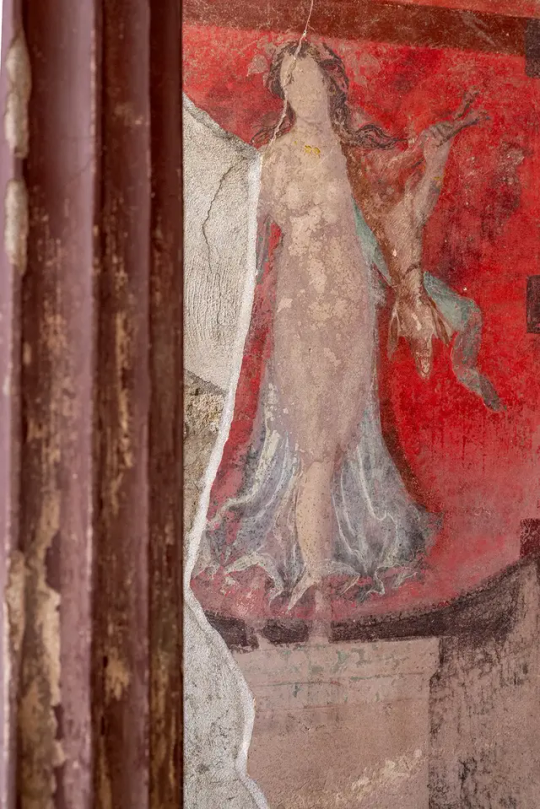
“It’s the double function of death and rebirth. Dionysus dies and is reborn. Through initiation into the cult, you are born again,” Zuchtriegel says to the London Times.
By 186 B.C.E., these festivals were at risk of dying out, as Roman authorities attempted to crack down on the scandalous ceremonies. But the presence of the paintings in the House of Thiasus and the Villa of Mysteries suggest that the secret rituals survived.
Although archaeological work continues, the frescoes are now on public display.
By Eli Wizevich.


#pompeii#stunning frescoes of a mysterious dionysian cult discovered in ancient pompeii#frescoes#ancient artifacts#archeolgst#history news#ancient history
2K notes
·
View notes
Text
Afrosheen commercial, 1972 💚
378 notes
·
View notes
Text





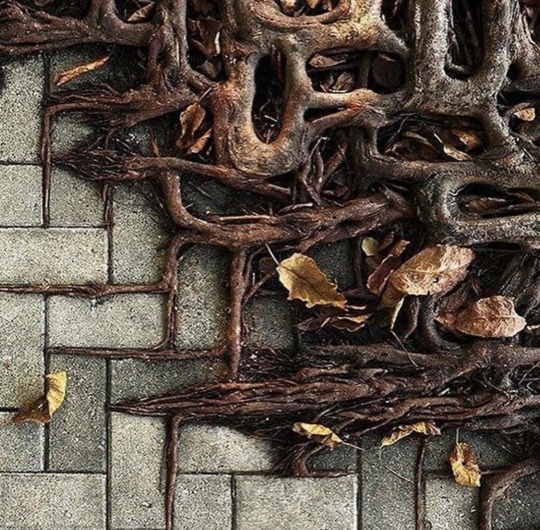
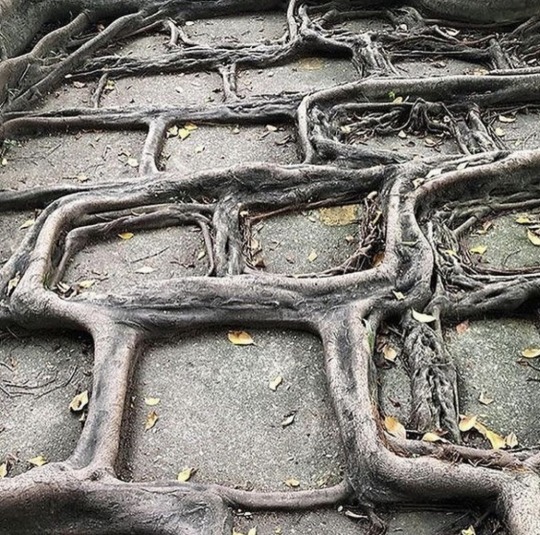

Tree roots following the pattern of concrete footpaths
141K notes
·
View notes